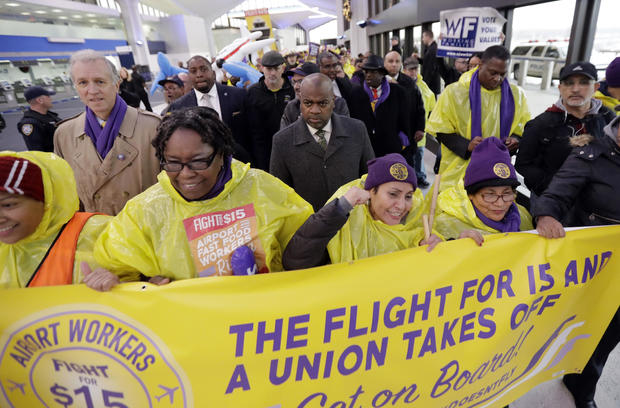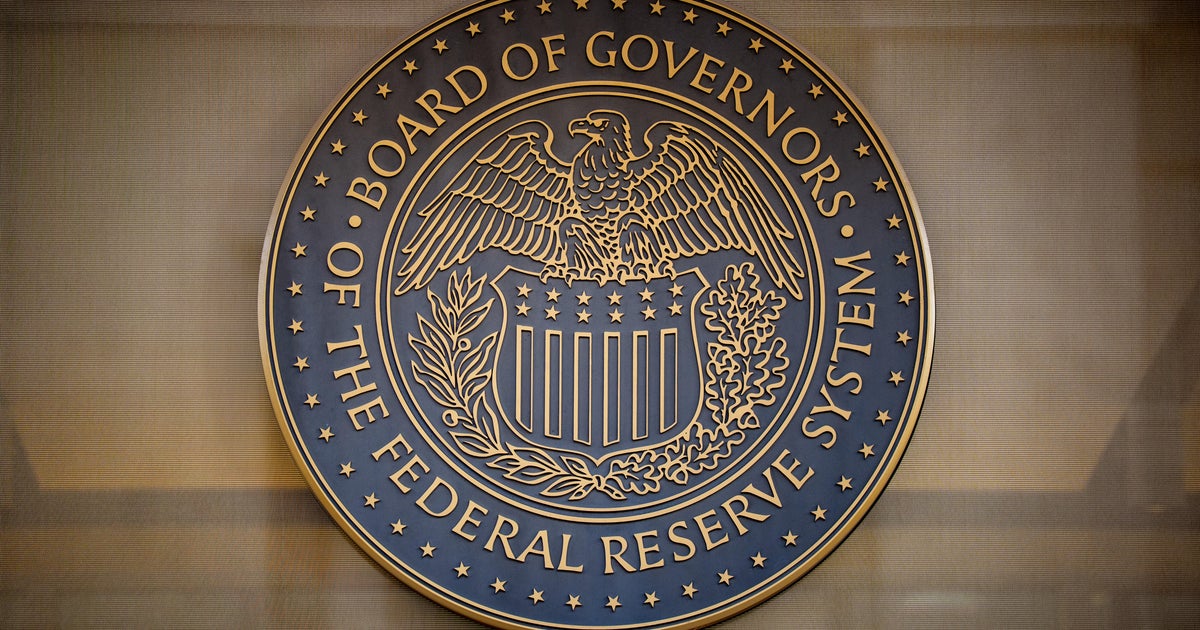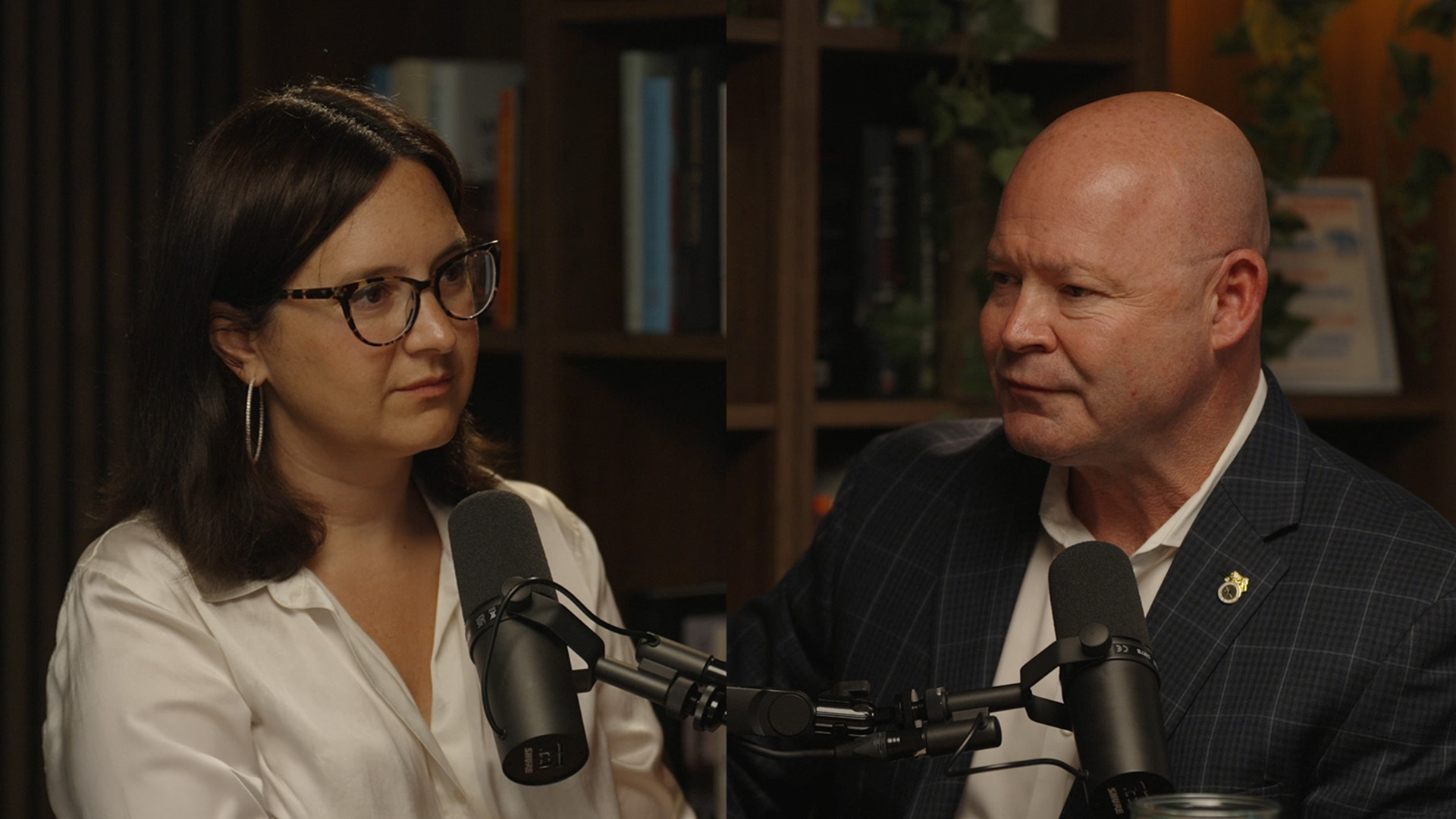For minimum-wage activists, jail time comes with the fight
McDonald’s (MCD) worker Terrance Wise said spending Tuesday morning in a New York City jail was a “beautiful thing.”
As part of the “Fight for $15” movement, a national union-backed campaign advocating for a $15 an hour minimum wage, Wise had traveled to New York City from his hometown of Kansas City, Missouri, to take part in a round of protests and strikes that the group has organized on its four-year anniversary, which it calls “Disruption Tuesday.” Wise and other protesters were arrested on Tuesday morning after they linked arms and sat in a lower Manhattan street, while low-wage workers held protests and planned to walk off their jobs in dozens of other U.S. cities.
“I went to jail to make sure my kids have a better future,” he said. “As I sat behind the bars, I thought about why I was there, how I’ll make the American public confront this thing we have going on, wage and racial inequality in this country.”
The Fight for $15, which is backed by the Service Employees International Union (SEIU), is marking its anniversary at an unusually volatile time in the country’s economic and political landscape. The movement is credited with helping raise awareness of the plight of low-wage workers and bolstering state and municipal efforts to increase the minimum wage.
President-elect Donald Trump has expressed contradictory beliefs about wages, describing them as “too high” while at other times professing support for boosting the baseline wage to $15.
“Whether you are a Trump supporter or a Hillary supporter, we all get up every day and we work,” Wise said. “Today sent a strong message, not only in New York, that workers are stronger than ever, and we have to increase our efforts, take bolder action. That’s what you’ll see from the Fight for $15.”
Wise, whose mother worked at Hardees, describes himself as a second-generation fast-food worker who now earns $9 an hour and struggles to make ends meet. He and his fiancée, who have three daughters, struggled with homelessness a few years ago, even though both of them were working at the time. Living on low wages “is constantly a hustle, a juggling act,” he said. “It’s the simple things we miss out on,” such as the ballet shoes he wasn’t able to afford for his daughter’s dance class.
“Fifteen dollars an hour and union rights would make my family a stable family,” he said. “To keep the lights and gas on at the same time.”
In many ways, the Fight for $15 has had remarkable success since it began in 2012. At the time, the call for a $15 minimum wage was viewed as a hugely ambitious, if not preposterous, goal, given that it reflected an hourly rate more than twice the federal minimum pay of $7.25 an hour.
Four years later, the movement is credited with helping raise support for higher minimum wage laws across dozens of states and municipalities. The National Employment Law Project estimates those baseline wage increases have provided $61.5 billion in annual raises. Corporations have also responded, with Walmart (WMT), McDonald’s and Target (TGT) among the companies raising their baseline pay to $10 an hour amid mounting public pressure to offer workers a living wage.
“When we first started, the Fight for $15 was for our employers,” Wise said. “We never set out as a minimum wage campaign to get elected leaders to change our wages. To see elected leaders stand up and support a higher minimum wage and support unions. that’s a sweet side impact of the Fight for $15.”
Yet with Trump’s victory, some conservatives are calling for a new focus on revitalizing higher-paying manufacturing jobs, describing the Fight for $15 as tangential to the bigger issues facing Americans. In the post-recession economy, low-wage jobs in sectors such as retail and the restaurant industry have proliferated, while many middle-class jobs lost ground.
“Big Labor and their allies would be wise to acknowledge the will of the voters and pursue constructive policies to create more good paying jobs for all Americans, rather than another government-mandate that will cost jobs and stifle economic growth,” said America Rising Squared, a conservative nonprofit, in a statement. It called the presidential election a “wake-up call,” and described Tuesday’s protests as “a highly coordinated, well-funded campaign by SEIU union bosses and their PR pros in New York City.”
Trump has vowed to revive America’s manufacturing sector, although labor experts warn that automation and other forces may make that goal tougher to achieve than in earlier decades. Manufacturing output has been growing at a faster clip than jobs in the sector, which is largely due to factories relying on cheaper and faster machines. That’s unlikely to change, given that a human welder costs about $25 an hour, compared with $8 an hour for a robot, according to the Boston Consulting Group.
If manufacturing jobs aren’t likely to return, what will replace such employment? In many cases, the low-wage jobs held by Fight for $15 supporters are the only types of occupations available to Americans without college degrees.
“When I talk to people on the picket lines in Minnesota and around the country, they tell me they’re striking for a better life for their kids and their families,” wrote Rep. Keith Ellison (D.-Minnesota), who is considered a favorite to run the Democratic National Committee, on Facebook. “They tell me they’re working harder than ever, and still struggling to make ends meet.”






